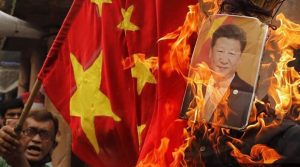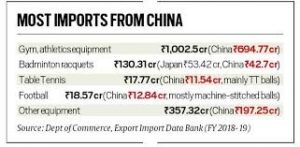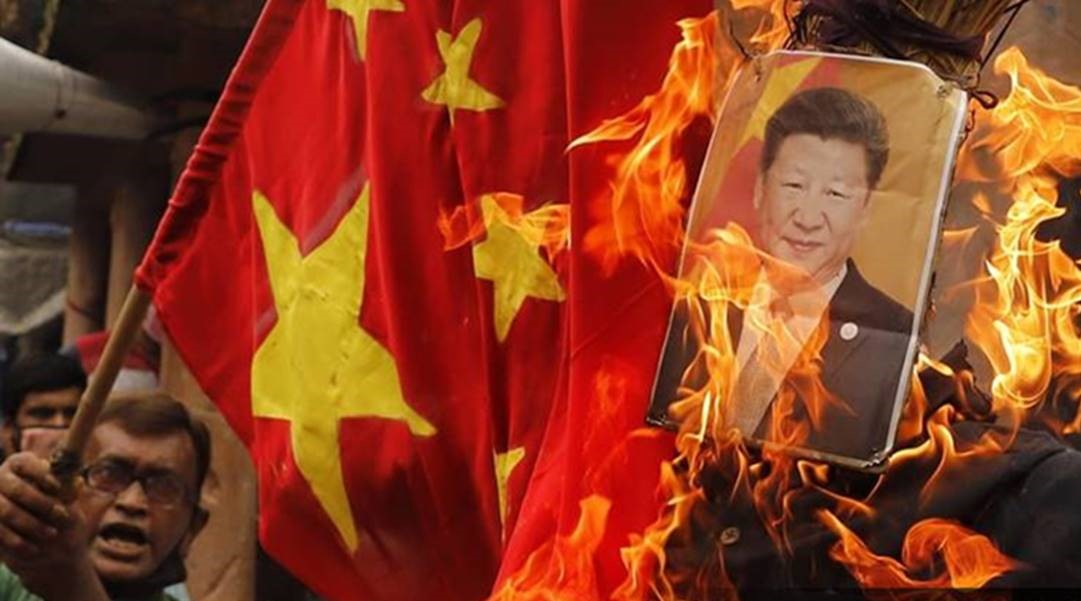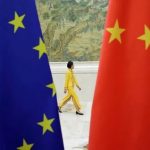Amid the rising clamour to boycott Chinese goods following the border clash that left 20 Indian soldiers dead, leading players in India’s sports industry find themselves in a tough corner.

Protests against China in Kolkata on Thursday.
Table tennis balls, shuttlecocks, badminton and tennis racquets, wrestling mats, javelins, high jump bars, boxing headguards, mountain climbing accessories, gym equipment, sportswear — the list of sports equipment imported from China goes on and on. Follow India-China border dispute LIVE updates
But now, amid the rising clamour to boycott Chinese goods following the border clash that left 20 Indian soldiers dead, leading players in India’s sports industry find themselves in a tough corner. The reason: More than half of India’s sports equipment imports are from China, according to the Department of Commerce’s data for 2018-2019 (see box).
“They have more than 50 per cent share in the sports market,” says Lokesh Vats, managing director of domestic manufacturing giant Vats. “We say ‘vocal for local’ but government policies over the decades have led to Chinese products completely invading our markets.”
Table tennis star Sathiyan Gnanasekaran says India is self-reliant when it comes to racquets and tables, but “China manufactures balls almost like a monopoly”.

Shanghai Double Happiness (DHS), he says, supplies balls for all world tour events, apart from World and Asian Championships. “All Indian players practise with the same set of balls to get used to the spin and bounce. At other levels, you see balls with different brand names. But even if you buy a set from Stiga (Sweden) or Stag (India), you will find that it is manufactured in China,” says Gnanasekaran.
It’s the same story for a lot of brands. Jay Kowli, general secretary of the Boxing Federation of India, says that a popular brand among Indian boxers is Australia’s Sting. “But they are all made in China,” he says.
Kowli, however, insists that only India-made equipment is used at the domestic level. “India has a strong manufacturing base for boxing equipment. However, since they have enough business in India, they haven’t gone through the international federation’s certification process. So we have to import equipment for elite training centres and top boxers,” he says.
Boxing’s equipment import bill for 2018-19 stood at about Rs 3 crore, with China accounting for Rs 1.38 crore.
Pran Nath Chadha, who is a member of the Sports and Toys Exporters Association in manufacturing hub Jalandhar, says Chinese manufacturers are “leading exporters for combat sports goods like mats and other protective equipment”.
But India’s reliance on China goes deeper than importing finished products, say officials and players. Domestic manufacturers, who mainly export hockey sticks and balls, cricket bats and balls, boxing equipment and chess boards, among other items, “depend a lot” on raw material from China.
Vikas Gupta of Soccer International, a Jalandhar-based export house that manufactures the Vector brand of footballs, volleyballs, basketballs and rugby balls, says they import polyurethane and ethylene-vinyl acetate foam from China for their products.
“The raw material quality in India is not good and we cannot reach the desired standard to export our products to major markets in Europe and USA as well in India. Chinese manufacturers provide us with high-quality raw material at a very competitive price,” he says.
Vats, whose firm is based in another manufacturing hub Meerut, says China is “far, far ahead in dyeing and engineering” as well. “The iron rods, benches, curling and multi-stations that you see at gyms are all imported from China because they are cheap. Almost all the material used for tracksuits comes from China because it is cheap,” he says.
Pricing and superior technology are cited as the other key reasons. For instance, a majority of the machine-stitched footballs sold in India are made in China, along with the artificial turfs that dot the country. “We need to invest in research and development, and overcome pricing problems,” says Vats. “We can’t just suddenly start boycotting Chinese products.”



